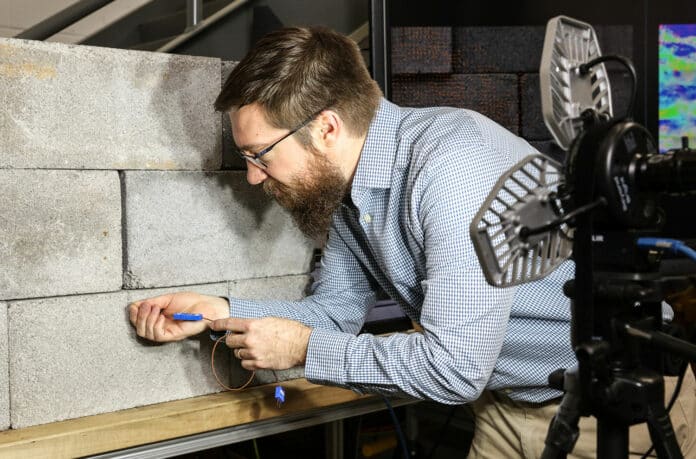Leaky buildings can be a major concern for homeowners as they indicate a decline in energy efficiency and can lead to higher energy bills. The air that escapes from home through windows, doors, and walls not only has a negative impact on finances but also affects the environment. To solve this issue, it is important to identify the exact location of air leakage so that the cracks can be sealed. However, this process can be quite expensive, time-consuming, and cumbersome.
To address these problems, researchers at the Department of Energy’s Oak Ridge National Laboratory have created a new detection system that allows home energy auditors to see air leaking from a building in real-time with the help of a camera. This breakthrough promises more accurate readings far more quickly than current diagnostic tools allow.
ORNL’s air leakage detection system is based on background-oriented Schlieren photography, a process used to capture fluid flow. It has most recently and more widely been used to photograph the flow of air around aeronautical objects.
The technique uses small shifts in the background of a sequence of images to visualize leaking air that has a different temperature than the surrounding air. This temperature difference creates what lead ORNL researcher Philip Boudreaux refers to as a mirage when viewed in front of a building’s facade.
“Even though this mirage is too small to be seen with the naked eye, it can be imaged by a camera,” Boudreaux said. “The mirage looks just like wavy patterns you might see rising up from the pavement on a hot day or in the hot exhaust of a car tailpipe.”
“Being able to triage the biggest leaks saves time and allows for the energy reduction and carbon burden of buildings to be quickly addressed,” he said in the official statement.
Researchers applied this approach to visualize leaks through three different types of cladding – brick, vinyl siding, and concrete masonry blocks. They conducted visualization experiments in two different lighting conditions – sunny and cloudy.
The visualization experiments showed that leaks could be detected when the temperature difference was as low as 12 to 15 degrees Celsius on the concrete block and brick claddings.
“We were able to get a sufficient temperature difference between the air around the leak area and the ambient air. Through ongoing research, we intend to get that leak detection temperature limit down to 5 degrees Celsius,” he said.
In addition to visualizing the leak, Boudreaux and team are working to find a way to measure the amount of leakage. This will allow building owners to better prioritize areas that most need sealing.
